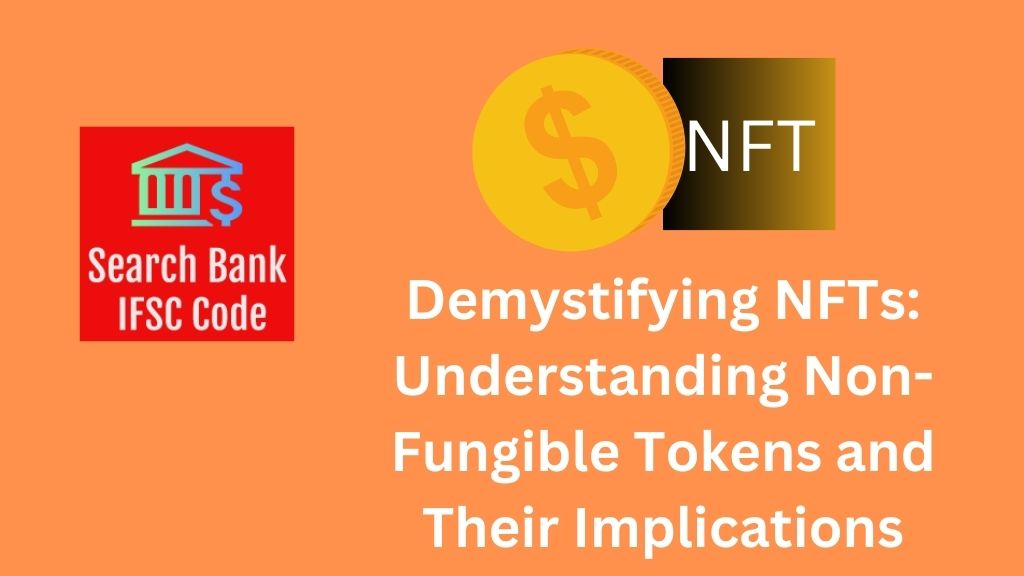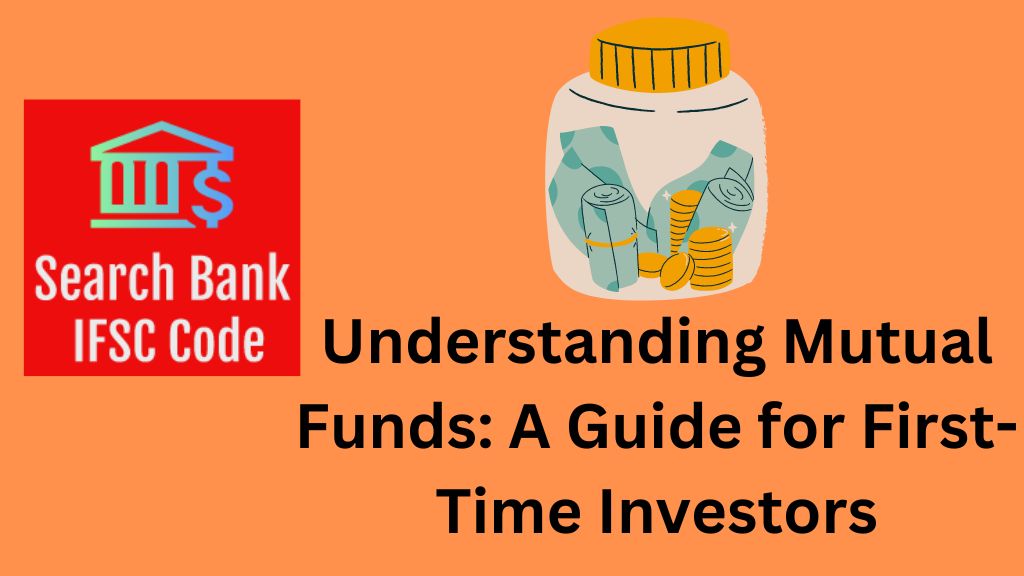Demystifying NFTs: Understanding Non-Fungible Tokens and Their Implications
Created at: 2023-07-03
Introduction
Non-Fungible Tokens (NFTs) have taken the world by storm, capturing headlines and sparking conversations in the realms of art, collectibles, and digital assets. But what exactly are NFTs, and why are they creating such a buzz? In this blog, we aim to demystify NFTs and provide a comprehensive understanding of their concept, functionality, and implications. Join us on this journey as we explore the world of NFTs and delve into their impact on the art market, digital ownership, and blockchain technology.

Section 1: Understanding NFTs
1.1 What are NFTs?
To fully comprehend the concept of Non-Fungible Tokens (NFTs), it is crucial to grasp the distinction between fungible and non-fungible assets. Unlike cryptocurrencies such as Bitcoin and Ethereum, which are fungible and can be exchanged on a one-to-one basis, NFTs represent unique digital assets that cannot be replicated or substituted. Each NFT possesses distinct characteristics, rendering it one-of-a-kind and irreplaceable.
1.2 How do NFTs work?
NFTs are built upon blockchain technology, with platforms like Ethereum serving as decentralized infrastructures for creating and trading these digital assets. The uniqueness and ownership of NFTs are recorded on the blockchain, ensuring transparency, security, and immutability. Smart contracts govern the transfer of NFTs, defining the rules and conditions for their creation, ownership, and transactions.
By leveraging blockchain technology, NFTs enable creators and artists to tokenize their digital works, verifying their authenticity, ownership, and provenance. Each NFT contains metadata that provides detailed information about the asset, including its description, attributes, and history. This metadata is permanently stored on the blockchain, making it publicly accessible and verifiable.
The ownership of NFTs is securely established through the use of cryptographic keys. Each NFT is associated with a unique digital signature, known as a token ID, which verifies its authenticity and ownership. This ownership can be transferred from one party to another through a secure and transparent process facilitated by smart contracts.
Furthermore, NFTs allow for the inclusion of royalty mechanisms, enabling creators to earn ongoing royalties whenever their NFTs are resold in the secondary market. This feature provides artists with an opportunity to benefit from the increasing value of their creations, fostering a more sustainable and equitable ecosystem for creators.
The market for NFTs has experienced significant growth, with various digital assets being tokenized, including artwork, music, virtual real estate, collectibles, and even virtual experiences. This proliferation of NFTs has led to new possibilities for artists, collectors, and enthusiasts, transforming the way we perceive and interact with digital assets.
However, it is important to note that the NFT space is still evolving, and challenges such as copyright infringement, plagiarism, and market volatility need to be addressed. As NFTs continue to gain popularity, it is crucial for market participants, platforms, and regulators to work collaboratively to establish best practices, standards, and safeguards to ensure the long-term viability and integrity of the NFT ecosystem.
In the next sections of this blog, we will explore the various applications of NFTs, their impact on the art market, digital ownership, and the wider implications for the future of blockchain technology. Join us as we dive deeper into the fascinating world of NFTs and unravel their potential to reshape industries and empower creators.
Section 2: Exploring NFT Use Cases
2.1 NFTs in the Art Market
The emergence of NFTs has revolutionized the art industry, providing artists with new avenues to showcase and monetize their digital creations. NFTs enable artists to tokenize their artwork, essentially creating a unique digital certificate of ownership that can be bought, sold, and traded on various NFT marketplaces. This direct connection between artists and collectors eliminates the need for intermediaries, such as galleries and auction houses, and empowers artists to retain more control over their work.
For artists, NFTs offer unprecedented opportunities for exposure, recognition, and financial gain. They can reach a global audience and connect directly with art enthusiasts, bypassing the traditional barriers to entry in the art market. Additionally, NFTs provide artists with the potential for ongoing revenue streams through royalties. Smart contracts embedded within NFTs can automatically allocate a percentage of the resale value to the original artist, ensuring they benefit from the increasing value of their work.
The impact of NFTs on the art market cannot be overstated. NFTs have challenged the traditional notions of art ownership, provenance, and value. The digital nature of NFTs opens up new possibilities for artists to explore immersive and interactive art forms that were previously difficult to monetize. This intersection of art and technology has sparked creativity, innovation, and discourse within the art community.
2.2 Collectibles and Gaming
NFTs have also found a significant presence in the realm of collectibles and gaming. Collectibles, such as trading cards, virtual pets, and digital memorabilia, can be tokenized as NFTs, granting ownership and scarcity to these digital items. NFT marketplaces dedicated to collectibles have emerged, allowing collectors to buy, sell, and trade their digital treasures.
Gaming has also been greatly impacted by the advent of NFTs. Players can now own and trade in-game assets, virtual real estate, and unique items through NFTs. This ownership goes beyond the confines of a specific game or platform, enabling players to retain value in their virtual assets and transfer them across different gaming experiences. The concept of "play-to-earn" models has emerged, where players can monetize their in-game achievements and possessions, blurring the line between work and play.
2.3 Digital Ownership and Intellectual Property
NFTs have ignited conversations surrounding digital ownership and intellectual property rights. By leveraging blockchain technology, NFTs provide an immutable record of ownership, creating a transparent and verifiable chain of custody for digital assets. This proof of ownership challenges the traditional notions of what it means to own a digital item.
With NFTs, digital artists can assert their rights and protect their intellectual property. The inclusion of metadata within NFTs allows artists to embed information about the authenticity, origins, and limitations of their digital creations. This metadata can serve as a digital certificate of authenticity, making it difficult for others to infringe upon the artist's work.
However, the rise of NFTs has also raised questions and concerns regarding copyright and plagiarism. The ease with which digital content can be copied and shared poses challenges in the digital realm. Artists must navigate issues of attribution, licensing, and fair use in this new landscape. The development of best practices, standards, and legal frameworks is essential to ensure the protection of artists' rights and the integrity of the NFT ecosystem.
In the next sections of this blog, we will explore the potential benefits and risks associated with NFTs, the environmental impact of NFTs, and the future outlook for this rapidly evolving technology. Join us as we continue to demystify NFTs and delve deeper into their implications for creators, collectors, and the broader digital landscape.
Section 3: Implications and Challenges of NFTs
3.1 Intellectual Property Rights
Protecting intellectual property rights is a critical consideration when it comes to NFTs. The decentralized nature of blockchain technology raises unique challenges in determining ownership and enforcing these rights. It's important to understand that intellectual property rights can vary depending on the specific asset and the terms of the sale.
For NFTs, intellectual property rights can take various forms. In some cases, the artist may retain copyright while licensing specific usage rights to the buyer. In other instances, the artist may transfer full ownership of the intellectual property along with the NFT. It's essential for artists and buyers to clarify the ownership rights associated with an NFT and ensure that these rights align with their expectations.
However, enforcing intellectual property rights for NFTs can be complex. The decentralized nature of blockchain technology means that verifying the authenticity of an NFT and tracking potential infringements may require additional effort. Artists may need to rely on reputation management, digital watermarking, or metadata embedded within the NFT to assert their rights and deter unauthorized use.
3.2 Fraud Prevention
As with any burgeoning market, the rise of NFTs has attracted its fair share of fraudulent activities. It's crucial for participants in the NFT space to be aware of the risks and take steps to mitigate them.
One common risk is the sale of counterfeit or unauthorized NFTs. Scammers may attempt to pass off unauthorized copies of digital artwork or other assets as genuine NFTs. To prevent falling victim to such scams, it is advisable to use reputable NFT marketplaces that have established verification processes. Conducting due diligence on the seller, including checking their reputation and track record, can also help ensure the authenticity of the NFT.
Another risk is the theft of NFTs, which can occur through hacking or phishing attempts. It's important to adopt strong security practices, such as using secure wallets and two-factor authentication, to protect your NFT investments. Be cautious of unsolicited offers, suspicious links, and requests for personal information, as these may be attempts to gain unauthorized access to your digital assets.
By staying vigilant and informed, individuals can reduce the risk of falling prey to fraudulent activities and protect their investments in NFTs.
3.3 Consumer Protection
The NFT market can be highly volatile, with prices fluctuating based on various factors, including market demand and the perceived value of the underlying asset. While some NFTs have seen significant appreciation in value, it's important to approach NFT investments with caution and protect yourself as a consumer.
Before purchasing an NFT, conduct thorough research on the underlying asset, the artist or creator, and the historical performance of similar NFTs. Understand that the value of an NFT can be speculative, and its market value may change rapidly. Only invest money that you can afford to lose, and consider diversifying your portfolio to mitigate risk.
Additionally, be mindful of potential scams or pump-and-dump schemes, where the value of an NFT is artificially inflated and then quickly deflated by manipulative tactics. Be cautious of promises of guaranteed returns or unrealistic investment opportunities. Seek out reputable sources of information and consult with experts or trusted advisors to make informed decisions.
By taking these precautions, consumers can navigate the NFT market responsibly and protect themselves from potential financial pitfalls.
As the world of NFTs continues to evolve, it's crucial to consider the implications and challenges associated with these unique digital assets. Understanding intellectual property rights, practicing fraud prevention measures, and prioritizing consumer protection are key factors in navigating the NFT landscape.
By expanding your knowledge and staying informed, you can make informed decisions, protect your investments, and contribute to the growth of a sustainable and trustworthy NFT ecosystem. As the NFT market matures, it's important for participants, platforms, and regulators to collaborate in establishing best practices, standards, and safeguards to ensure the long-term viability and integrity of the NFT space.
Conclusion
NFTs have emerged as a disruptive force, transforming various industries and challenging traditional notions of ownership and value. By understanding the fundamentals of NFTs and their implications, we can navigate this evolving landscape with greater insight and make informed decisions. As the NFT market continues to evolve, it is crucial to address the challenges, foster innovation, and explore the potential for positive change in the world of digital assets.





